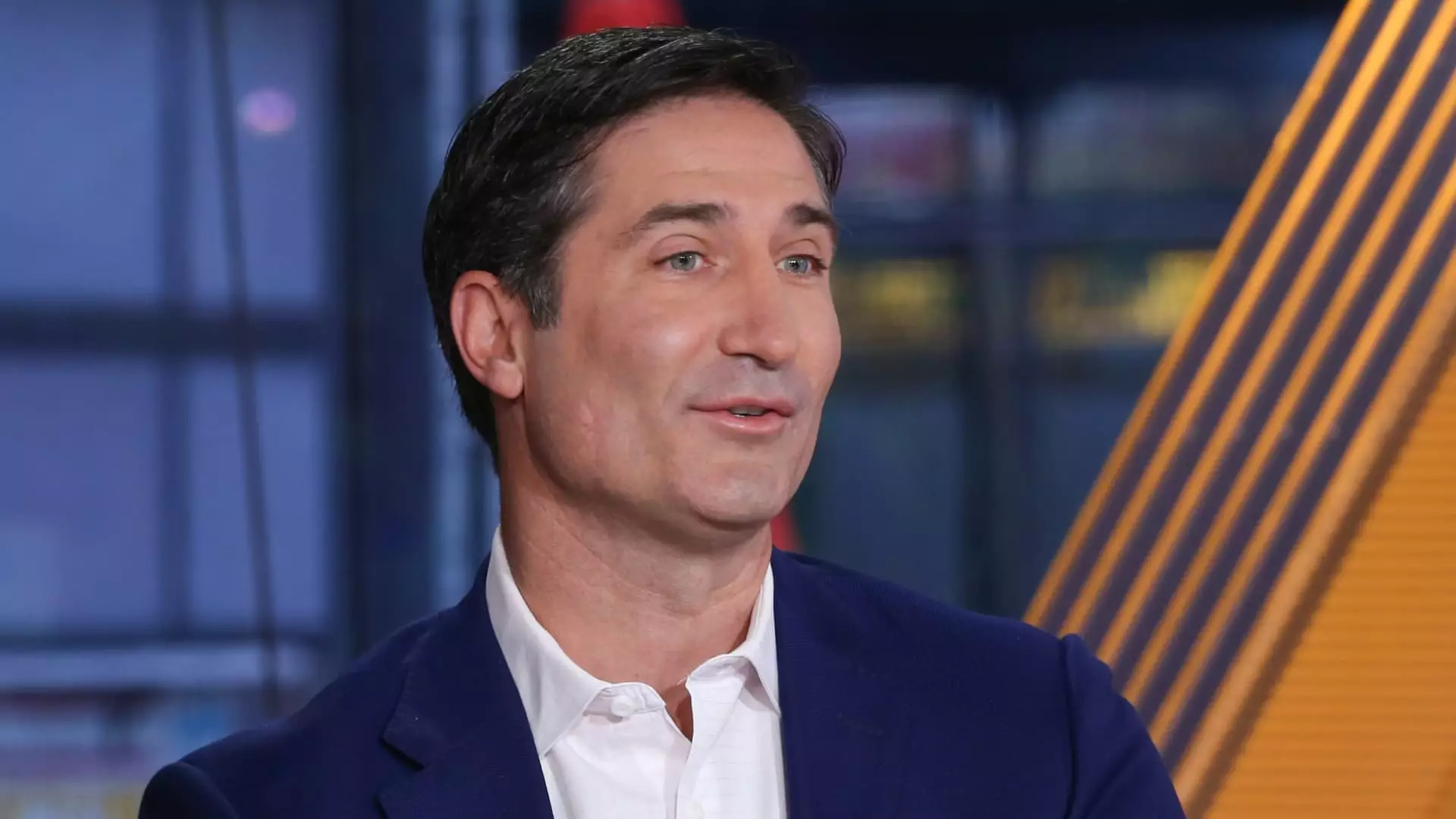Starbucks has found itself grappling with a complex blend of challenges, despite reporting quarterly earnings that managed to exceed Wall Street’s anticipations. The coffee giant announced on Tuesday that its same-store sales have dipped for the fourth quarter in a row—a trend that underscores the ongoing struggles of its U.S. operations. Consequently, while the overall fiscal first-quarter net income showed a decline, from $1.02 billion a year earlier to $780.8 million this time around, the earnings per share of 69 cents surpassed the forecast of 67 cents. These mixed signals beg the question: Can Starbucks effectively navigate its current landscape and return to growth?
With Brian Niccol stepping into the CEO role last September, Starbucks has initiated a strategic pivot aimed at reinvigorating its domestic business. Niccol has emphasized a fundamental “back to Starbucks” philosophy, redirecting the company’s energy toward core offerings, most notably its coffee products. This approach includes removing additional charges for non-dairy milk options, revamping marketing strategies to highlight coffee, and considering a significant menu overhaul that reflects evolving consumer preferences. Such initiatives have elicited a “positive response” from customers, but the question remains whether these measures can yield sustainable results in a highly competitive marketplace.
Customer behavior is a critical issue that Starbucks must address if it hopes to recover its footing. The coffee chain experienced a 6% drop in traffic, contributing to a 4% decline in same-store sales. This decline signals not just consumers’ shifting preferences but also the effects of an evolving economic environment. While Starbucks has performed better than expected compared to analysts’ projections, it’s the underlying trends of decreased foot traffic and sales that paint a more sobering picture. Customers might be gravitating toward alternative coffee providers, further complicating Starbucks’ efforts to thrive.
The struggles aren’t confined to American locations; Starbucks also reported a 4% drop in same-store sales across international markets, with a notable 6% decline in China, its second-largest market. The company’s competitive strategy in China has involved substantial discounting to contend with rivals like Luckin Coffee, which offers consumers lower prices. This may indicate a need for Starbucks to recalibrate its value proposition in diverse markets, adapting more distinctly to regional competitor practices while maintaining its premium brand image.
In light of the ongoing sales challenges, Starbucks has taken decisive measures by suspending its financial forecasts for fiscal 2025. Recognizing the need to optimize its capital allocation, the company is reining in the number of new store openings and renovations in the upcoming fiscal year. These efforts are designed to liberate resources for its turnaround strategies, underscoring a proactive approach in a fluctuating retail environment.
Moreover, Niccol’s operational restructuring includes modifications to the corporate hierarchies within Starbucks. The division of the North American president role into two distinct positions signals a strategy to boost focus and efficiency. By appointing leadership from Taco Bell—Niccol’s former employer—the company seeks to infusion fresh insights and experiences into its operational framework, setting the stage for renewed vigor.
As Starbucks forges ahead, it will have to navigate a landscape marked by evolving consumer preferences and heightened competition. While ceasing to offer extra charges for non-dairy milk options and revamping marketing campaigns are promising steps, the coffee titan needs consistent, positive changes to translate these resets into measurable growth. Preparing for potential layoffs later this year adds another layer of complexity, underscoring the urgency and gravity of Starbucks’ journey ahead.
Through these challenges and adjustments, Starbucks continues to embody a dynamic corporate spirit, striving not just to adapt, but to thrive amid adversity. Whether these strategic changes will restore the brand’s former glory—and consumer connection—remains to be seen, but the company appears determined to pursue that goal with renewed vigor.


Leave a Reply